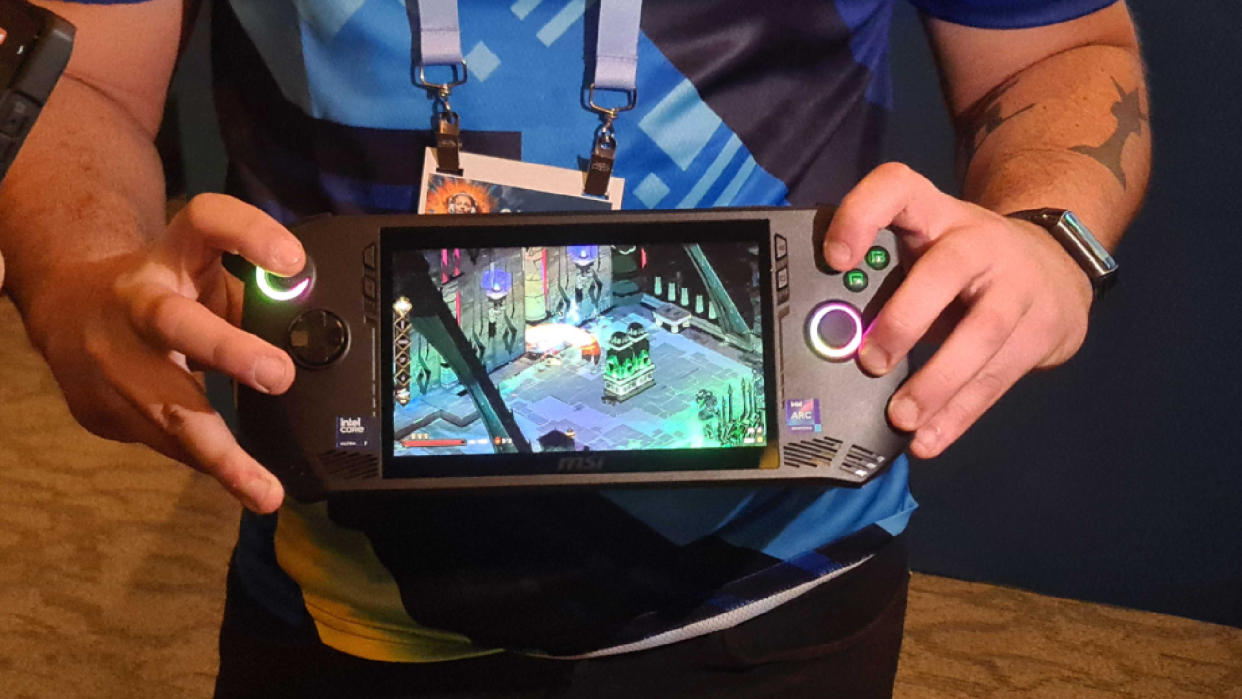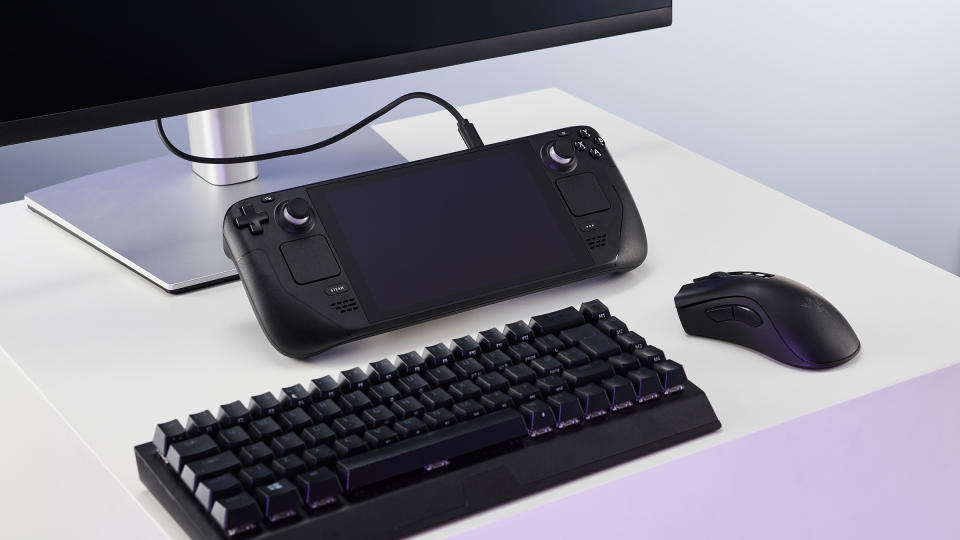MSI has launched a new gaming handheld, and there are two things you should know: It's the first to launch with an Intel Core Ultra processor, and for some reason it's called 'Claw'

Thanks to the popularity of the Steam Deck, it's no surprise that we've seen a multitude of manufacturers jump on the handheld gaming PC bandwagon. They have all released competing devices, each with their own take on the form factor and each hoping to carve out its own segment of this new emerging market. Now it's MSI's turn to show off its new handheld gaming device, and well, it's called the Claw.
Beyond the rather unusual name, the real headline feature here is that MSI's new portable gaming device is set to become the first gaming handheld to use Intel's new Meteor Lake processors—the Intel Core Ultra series—up to the Intel Core Ultra 7 155H.
That means it'll be making use of the integrated Intel Arc Xe-LPG GPU with 8 Xe-cores and a 2.25 GHz clock along with XeSS upscaling, which should make it an interesting contender vs the AMD-designed Sephiroth APU found inside the Steam Deck OLED.
Speaking of OLEDs... you won't find one here. Instead the Claw will feature a 7-inch FHD 120Hz IPS-level touchscreen display with a 500 nits typical brightness rating. Audio will be handled by two 2W speakers, while the I/O consists of a single Thunderbolt 4/USB Type-C port, a microSD card reader, a combination audio jack, and a power button complete with fingerprint sensor.
Control-wise the main thing that stands out are those RGB-ringed asymmetrical thumbsticks, which initially strike me as a bit of an odd choice, although it's not the first handheld we've seen to go in this direction.
Two sticks in asymmetrical configuration make a lot of sense on an Xbox controller as your hands are tilted inwards and close together, but on a wider device it does look a little awkward, although we'll have to wait until we get our hands on one to find out if it's an issue in practice.



More on the Steam Deck

Steam Deck OLED review: Our verdict on Valve's handheld.
Best Steam Deck accessories: Get decked out.
Steam Deck battery life: What's the real battery life?
Best handheld gaming PC: What's the best travel buddy?
Other than those sticks the rest of the chassis looks fairly default, with no other big surprises. That Intel Core Ultra processor will be kept fed by an internal six-cell 53Whr battery which is a slightly larger than the 50Whr unit found in the Steam Deck OLED. MSI reckons this provides two hours of battery life under full workload, although at what screen brightness settings –one of the biggest draws on a handhelds battery – remains unclear.
It'll also be interesting to see how that 120Hz screen might affect battery life at full tilt, although we found little difference when switching between 90Hz and 60Hz modes in our Steam Deck review. 120Hz is a fair bit faster though, and on a different panel entirely, so how this affects the overall battery life will be interesting to see.
While the chassis and the rest of the design looks fairly default, it's those Intel internals that really makes this new handheld stand out from the pack. Depending on the performance achieved here, this may well be a case of Intel taking the fight to AMD in the handheld gaming market. And that's a battle that may well split opinions as to which platform to buy when it comes to the best portable performance. One to keep an eye on this, or at the very least, a talon or two.
_____________________________________
PC Gamer's CES 2024 coverage is being published in association with Asus Republic of Gamers.
